by meghanleborious | Apr 20, 2020 | Notes on Practice
 I really didn’t feel like practicing. It had already been a long day; and I had another big day coming. I was on a meditation retreat at Garrison Institute, and part of my personal practice was to dance a 5Rhythms wave, o sea, in other words, to move through each of the five rhythms in sequence. At least once a day, I tucked my socks into my pants, sprayed myself with deet, and made my way down a wooded path to the Hudson River. Because it’s my practice, even though I didn’t feel like it, I still stepped in.
I really didn’t feel like practicing. It had already been a long day; and I had another big day coming. I was on a meditation retreat at Garrison Institute, and part of my personal practice was to dance a 5Rhythms wave, o sea, in other words, to move through each of the five rhythms in sequence. At least once a day, I tucked my socks into my pants, sprayed myself with deet, and made my way down a wooded path to the Hudson River. Because it’s my practice, even though I didn’t feel like it, I still stepped in.
I began in a tiny inlet, on a beach enclosed by tree cover. In Flowing I was lackluster. I moved in circles on the little beach, cutting up the sand’s surface. In the second rhythm of Staccato I was still not really into it, determined to see the wave through, but also eager to get it over with. Then, a spark caught, somewhere in the transition from Staccato to the third rhythm of Chaos. I moved from the little inlet to an open, glacial rock that rose up over a powerful expanse of the river and moved with abandon. In Lyrical and Stillness, the world opened itself. I imagined that I sunk to the depths of the ancient river, where it was black and dense, then rose up again with its density streaming down the rock channels of me.
Sometimes practice is mundane. Sometimes it is life-changing. You never know what will happen until you step in. In 5Rhythms, there is a tradition, a benediction, sometimes expressed at the beginning of a wave: “See you on the other side.”
All of our dances, all of our practice experiences are necessary. After about two years of dancing the 5Rhythms, I went through a period of agonizingly painful dances. It lasted almost two months. Every time I stepped in, I felt terrible. I felt isolated, disengaged, disincluded, and unable to connect. It was extra painful because I’d become accustomed to the wild, frenzied release that left me whimpering and grateful, alive, full, knowing. And for this long period, it just wasn’t available.
Thankfully, by then, I had already developed a strong practice. I had already verified for myself that 5Rhythms was beneficial for me, and was worth the dedication of precious resources. If I didn’t already have a strong practice–a regular, intentional practice that was not rocked by external factors–I’m sure I would have stopped attending 5Rhythms classes. As it was, I just kept attending, noticing how I was feeling, and knowing that it would pass. Later, when I hit patches of agonizing discomfort, I would draw on this experience, reminding myself that practice would not always be pleasant, but that the periods of discomfort would pass, and would leave me with deeper faith in my own ability to stay present in the face of whatever arises.
In the simplest terms practice is something we do regularly and intentionally without being attached to a certain outcome in a given session. We show up again and again. Usually, something only becomes a practice if we have been raised with it, or we have field tested it and found it worthy of our dedication.
To me, having a 5Rhythms practice means regularly, intentionally dancing the 5Rhythms, regardless of how I feel before, during, or after. It means I don’t ask the dance to fix me in the moment, but, over time and with slow erosion, to free me from my personal prisons and to reveal the nature of reality.
When my son, Simon, was first born, I developed a practice of writing a poem a day. As is true of many practices, it started accidentally. My sister invited me to swap haiku poems for fun, and somehow I caught a little groove of poem writing. I let go of using the haiku form, and instead wrote about my daily experiences, capturing the exquisite beauty of Simon’s first months of life, including the blizzard snows that buried New York City that year, the sublimely quiet room where I sat breastfeeding him in the quietest hours of night, the silver J train sliding across the bridge in view outside the window, and how it felt to look at my tiny son’s face as he slept. And I also captured the pain of that time period, as my relationship with Simon’s father was falling apart.
After a week or two of catching an accidental groove, I started to realize it might be worth making this into a practice. So I did. Some days I wrote more than one poem, but almost every day I wrote at least one, sometimes staying up just a little bit later to accomplish this task. Sometimes the poems were mundane, sometimes they were life changing. Once I wrote. “I’m too tired to write now. Maybe if I can just hold this pen upright, the world will flow through it.”
One of the benefits of this practice was that it sensitized me to the poetic level of experience, and had me looking for it all the time. To me, “poetic” is a level of experience that is concerned with the beauty of exquisite reality, of sometimes painful and imperfect aliveness.
I kept it up for nearly three years, writing over a thousand poems. At that point, I discontinued the practice. I had started a new job, and it started to feel like I was forcing it in a way that was no longer benefitting me. I had already started to slack off, but made a conscious choice to let it go, recognizing that practice is worth discipline, but once it becomes rigid, it might be time to let it shift or end.
Knowing when to embody Flowing and when to embody Staccato is an important skill for working with the practices that create meaning in our lives and help us to realize our potential.
In 5Rhythms, practice falls into two categories. “In the dance” when we are intentionally practicing, and not in the dance, in other words, at all other times. All of it can be viewed as practice.
Whatever we repeat becomes a practice, in a way. For example, road rage, insecurity, gratitude, or frequent hand-washing. Through repetition, we carve a groove in our mind to arrive at a particular state or to exhibit a certain skill. For our purposes, though, we need to distinguish between intentional practice and practicing/re-enforcing conditioned responses.
Practice and conditioned responses can look similar, but are fundamentally very different.
The key difference is in how we are in relationship to the given practice. If a practice serves to open our experience and bring us into (sometimes painful) confrontation with our misconceptions, then it is probably a practice. If a “practice” causes us to shore up our view of ourselves as separate or better than or less than or omnipotent or limited, and to disconnect from physical and energetic reality, then it is probably a conditioned response, not a practice. This is true even if it looks like a practice.
Distinguishing between these two requires skill and insight, and often input from a clear-seeing teacher, especially in early to intermediate stages of the path. And there are often multiple layers of intention. As such, a practice might need to be examined complexly for information about how it is functioning for a given practitioner.
Identity stories are a kind of practice, and can support practice in the larger view. For example, my teen students need to develop healthy identity stories (“I’m a good student, I’m lovable, I’m someone who has a healthy relationship to emotions”) to support them on their path. If they cannot construct through practice these healthy identity stories, they will struggle to move into a later stage of development. At another level, those same identity stories may become conditioned habits, and obstacles to opening into the naked truth of bare awareness. But they are developmentally essential practices at a certain stage.
Some 5Rhythms teachers believe that the core of 5Rhythms practice is continuous, sustained, profound mindfulness of body, and of the feet in particular.
Our main practice is to move.
And there are infinite sub-practices within the main practice of 5Rhythms.
In Flowing, we practice bringing attention to the soles of the feet and dropping the weight down. We acknowledge the importance of ground and grounding. We also practice allowing our bodies to move in unending circular motion. And we practice having an attitude of receptivity, and paying attention to the inbreath. In Flowing, I also practice paying attention to the perimeter of the dance floor, and sometimes physically circling the space. Sometimes I also use a practice adapted from Thich Nhat Hahn, in which I acknowledge each person without direct eye contact, patiently noticing each person and saying internally, “I see you there; and I’m grateful for it.”
In Staccato, we practice bringing attention to the outbreath, and with using sharp, percussive movements. We invite specificity and direction. We also find nuanced ways to work with the beat, and to relate to partnership. One sub-practice that I use in Staccato is noticing if I think partnering with someone is negative, positive, or neutral. Then, I either decide to move away from them if I don’t want to dance with them, or decide to stay and see what happens. And the same for someone I feel positive about partnering with.
In Chaos, we let go of our heads, and alternate between shifting weight between our feet, and moving with whatever wild demon possesses us. We invite and celebrate unpredictability. We go all out, to whatever extent we can at that time. One practice I personally use in Chaos is to experiment with going to the farthest edges of balance. I also experiment with inviting resistance to Chaos, then releasing fully into it, sometimes toggling between the two.
In Lyrical, we rise up and allow ourselves to become weightless if it’s available, trusting that we’ve already established our ground, and often engaging with the element of space. Lyrical shifts so much, but I often experiment with practicing extension and balance in Lyrical.
In Stillness, we allow ourselves to be moved by breath, and in some cases to merge with a larger view than conventional reality can accommodate.
In practice, nothing is always true. There is always nuance. For example, in general it is helpful to open the eyes during 5Rhythms practice, for practical, psychological, and spiritual reasons. However, a given person might have a conditioned habit of always keeping the eyes open because they are afraid to sink deeply into their inner darkness. In this case, it would be appropriate to engage in a practice of closing the eyes periodically, to investigate and explore the teachings available through breaking the habit of always having the eyes open. Also, intuition might insist on closing the eyes at a certain time. This might be conditioning, or could be an important directive from inner wisdom or spirit guides. Insisting on always keeping the eyes open, without any willingness to acknowledge nuance, might suppress important insights or revelations.
Practice is a balance between structure and creativity. Committing to a practice or a sub-practice requires discipline. Sometimes we do it even if it isn’t fun or we aren’t in the mood. At the same time, responding to the shifts in one’s needs requires creativity; and it is a vibrant, dynamic process.
Doing something as a practice yields benefits that are not available in haphazard or incidental actions. Practice requires grit and discipline. It forces us to push through resistance, inertia, and neurosis. It also requires us to gently reassure the tender ego, that although we are walking the path of absolute freedom, we are no threat to him. Practice requires gentleness and self care, and asks us to notice and relent if pushing through has actually become an act of aggression against ourselves.
Now, as we face a worldwide pandemic, practice is here to hold and sustain us.
Practice is the path.
Practice is a way to make the most of this life, and to offer the fruits of our devoted work to the benefit of all beings. Practice is a blessing. That we are alive in this time, in this moment, in this body, in this way, is nothing less than a miracle.
April 19, 2020, Broad Brook, Connecticut
(Photo from aleanjourney.com)
This blog consists of my own subjective experiences and ideas on the 5Rhythms® dancing path, and is not sanctioned by any 5Rhythms® organization or teacher.
by meghanleborious | Apr 18, 2020 | Notes on Practice
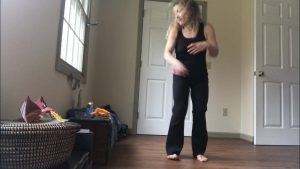 For the last two nights, I’ve slept on my back. This despite being a side-sleeper for pretty much my whole life. I have a certain way of tucking the pillow into the side of my neck, settling in, and nestling my back up to a pillow or another body. But my shoulders suffer, and the asymmetry sets me up for all kinds of misalignments. I’ve tried re-training myself many times, but I let myself go back to what’s comfortable when sleep has eluded me. This time, I think I’m on track to finally interrupt this persistent habit.
For the last two nights, I’ve slept on my back. This despite being a side-sleeper for pretty much my whole life. I have a certain way of tucking the pillow into the side of my neck, settling in, and nestling my back up to a pillow or another body. But my shoulders suffer, and the asymmetry sets me up for all kinds of misalignments. I’ve tried re-training myself many times, but I let myself go back to what’s comfortable when sleep has eluded me. This time, I think I’m on track to finally interrupt this persistent habit.
Yesterday, I logged into a zoom class that a friend led. I love his facilitation style, but I just couldn’t get into it this time. I was already feeling shut-down and discouraged, possibly because of many coronavirus deaths in my work community. Then, during the afternoon something I said contributed to disequilibrium in a whatsapp group. I apologized, but it was too late. I wasn’t wrong, exactly, but it really wasn’t my business. I wished I had stayed quiet or been more supportive. Even my ten-year-old son, Simon, felt I was in the wrong.
For a minute, I started to make a case against the person, but that fell apart pretty quickly. Then I started to make a case against myself. How I’m a bad person, how no one really likes me anyway. I started to visit past experiences, focusing on my many regrets. And I thought about all the recent emails I’ve sent that haven’t been answered, seeing it as a sign that I’m not really included or approved of, totally disregarding the fact that many people are grieving, or intolerably stressed, or have their hands overfull and answering their emails isn’t a top priority.
I really wanted to quit the group. They probably don’t want me anyway, I reasoned. But I made a recent resolution to be more present and available in group friendships–something I have struggled with–and I decided to stick it out for awhile.
 In Flowing, I rolled and stretched on the floor, keeping as much of me touching the ground as possible as I curled and flipped over, at times rolling over the back of my skull or laying flat, arms and legs outstretched, on my belly or back. On my feet, I let my arms gently follow and rub against the rest of me. I let my weight down into one foot at a time, seeing if I could connect with the center of the earth. During all of this, I was also thinking about feeling left out at work, and how to approach some of my tasks. These kinds of thought processes continued into Staccato, though I could see the pattern my mind was insisting on. In Chaos, I was more energetic, but still felt lackluster in terms of engagement. Lyrical found me briefly disengaged from persistent thinking, but still uninspired. I disconnected from the session as we moved into Stillness, and made a video for the students I teach.
In Flowing, I rolled and stretched on the floor, keeping as much of me touching the ground as possible as I curled and flipped over, at times rolling over the back of my skull or laying flat, arms and legs outstretched, on my belly or back. On my feet, I let my arms gently follow and rub against the rest of me. I let my weight down into one foot at a time, seeing if I could connect with the center of the earth. During all of this, I was also thinking about feeling left out at work, and how to approach some of my tasks. These kinds of thought processes continued into Staccato, though I could see the pattern my mind was insisting on. In Chaos, I was more energetic, but still felt lackluster in terms of engagement. Lyrical found me briefly disengaged from persistent thinking, but still uninspired. I disconnected from the session as we moved into Stillness, and made a video for the students I teach.
The video was about how our habitual fear stories can build up and cause us to feel overwhelmed, and how it is important that we learn to cut through our thoughts by coming back to the present when we start to make a case against ourselves.
In the evening, I avoided the temptation to drink wine to have a break from the difficult feelings I was experiencing. Instead, I wrote, then meditated at length, wrapped in a blanket in a dark room, lit only by one candle from my altar. I watched related thoughts arise and fall away, still making a case against myself, still feeling shut down, but gaining a little distance, and was able to sleep peacefully.
Today, things felt a little easier.
Again, I was drawn into exchanges with the same whatsapp group, but I didn’t feel disliked or disincluded. In fact, I found the people who contributed very supportive and receptive. I shared that I had been tempted to quit the group, but decided to ride it out. In the past, I’ve been inclined to shut down quickly in group relationships, but this time I wanted to try something different. I’m curious to see where it will lead, and excited about another strong community to learn from and grow with.
My biggest block in practice yesterday was in Staccato, but today I felt more connected as I joined a group of close friends on a zoom dance.
The livestream class was very clear and direct, with the teacher naming each form of each rhythm as it arose. In Flowing, I spent some time creating a perfect white circle around my home dance floor, and casting a circle spell. Then, I lost myself in weighted spins, following my intuition even if it didn’t look like typical flowing movements. The teacher offered a challenge that engaged me and I reflected that good teaching is a process of refining attention by offering hooks and challenges for students to engage with, and eventually supporting them to create refinements and challenges for themselves.
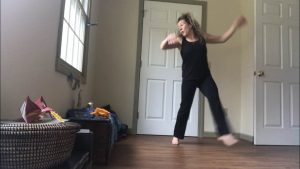 In Staccato, I found edges and definition, sinking low in a howling yoga-goddess-pose again and again. In Chaos, spin was my thread, and I followed coiling, moving like a matrix, and flapping my head wildly as the expression of the spine in perpetual motion. In Lyrical I noticed that different dancers were highlighted on the zoom screen, and I moved in partnership with that specific dancer, assuming they, too, were seeing me. In Stillness I moved into vast space, noting the movements of clouds, the many birds I could see from the window, and wondering about arcane languages.
In Staccato, I found edges and definition, sinking low in a howling yoga-goddess-pose again and again. In Chaos, spin was my thread, and I followed coiling, moving like a matrix, and flapping my head wildly as the expression of the spine in perpetual motion. In Lyrical I noticed that different dancers were highlighted on the zoom screen, and I moved in partnership with that specific dancer, assuming they, too, were seeing me. In Stillness I moved into vast space, noting the movements of clouds, the many birds I could see from the window, and wondering about arcane languages.
After Stillness drew to a close, we came together in conversation. My newly-created zoom pattern is that I bail as soon as the music stops. Often Simon is drawing me, but it might also be that I’m uncomfortable in this kind of group friendship. Today I enjoyed the conversation, contributing and listening patiently.
Why might it be helpful to interrupt our persistent habits? In general, defaulting to our rehearsed patterns (and the mind-stories that support how we currently see ourselves) functions to keep up trapped in our small sense of self, and our painful, futile efforts to sustain our fragile ego. At this time, our patterns are rocked, and we have the choice to either dig in and insist on them, or to see them in the clear light of day and change our way of relating to them.
If there is any value to be gathered from this time–though any consideration of value in the face of such devastation is surely an expression of privilege–it is that it is an opportunity to confront and interrupt our habits, certainly on an individual level, and I hope, I pray, I intend, on a societal level, that we may establish new habits, new ways to share resources, and new ways to value our myriad contributions.
April 16, 2020, Broad Brook, Connecticut
by meghanleborious | Apr 1, 2020 | Notes on Practice
 Things I wrote even two or three days ago seem so dated now. The pandemic is intensifying in this region.
Things I wrote even two or three days ago seem so dated now. The pandemic is intensifying in this region.
I’m in the eleventh day of a 14-day quarantine in an apartment attached to my parents’ house, along with my ten-year-old son, Simon. We are in quarantine because we just came from Brooklyn, NYC, the epicenter of the United States coronavirus plague, and I’m afraid to expose my parents.
Fear, sadness, and anxiety come in waves.
My work is to teach meditation to teens in a Brooklyn High School, and in a matter of days, like many other teachers, I had to make the pivot to online teaching. I’ve been working tirelessly to engage my students, but at this point less than half are actively participating in the online class. So I sent an email to their parents to let them know their students’ status. One parent responded that she is working 12 hour shifts and it is hard to keep up with her child’s assignments.
I realized how insensitive my email was, given the circumstances.
Some of the parents of my students are low wage health care workers. Many are working long shifts caring for people infected with coronavirus, seeing up close how horrific the disease can be. They are risking their lives, day after day after day. Some are doing it because of altruism and a deep calling to serve. Some are doing it because they absolutely have to work, and do not have the resources to take any time off. Many are single parents.
This is a slap in the face about the real impact of bias in our society, and one of the infinite ways coronavirus is disproportionately impacting communities of color. I thought about the privilege of being able to withdraw from NYC, and the fact that there are many people who don’t have the same option.
And I’m seriously bugging parents about their kids doing their classwork. Really?
Some of my students have a parent or grandparent who already has the virus.
There is now an emergency tent hospital in the middle of central park. A US Navy hospital ship arrived Monday to help exhausted health care workers as they toil, often lacking even basic protective supplies.
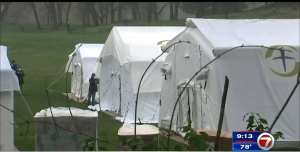 In answer to a writing prompt, “What is one thing you wonder?” One student wrote, “I wonder if it’s even safe to go outside and get a breath of fresh air.”
In answer to a writing prompt, “What is one thing you wonder?” One student wrote, “I wonder if it’s even safe to go outside and get a breath of fresh air.”
Every day, I start with a period of meditation, before the sun is even up. I transported my entire altar box and all of its contents to our new location, and re-created the exact altar that I had in Brooklyn right before we left. I also brought many of my cherished books, and arranged them beautifully near the altar.
Lately, my morning meditation feels more like prayer than meditation, as I focus energy and attention on wishing health and safety for everyone I love and for all beings, mixed with other meditation practices and contemplations.
I have to clock in to work at 8:15 but most days I start long before, after taking a shower, trying my best to get Simon oriented to his schoolwork, and having breakfast.
I make sure we get outside at lunchtime, and again after my workday ends at 2:50. We play on the swing in the yard and laugh. Sometimes I can even convince Simon to play soccer or take a bike ride with me.
Yesterday, I heard my mom crying through the wall, and learned that the son of one of her friends is in hospice.
Today, she told me that my cherished great aunt is not doing well, either. Her 100th birthday is this spring, but since she has been isolated and has no visitors, and therefore nothing to anchor her to this world, she has been dissolving into spirit. She lives next door to my parents’ house, in the same house that she and my paternal grandfather grew up in with their parents, my great grandparents.
I wanted to run next door to support her in her transition. I rushed out in the direction of the house, without even a coat, and just stood there, crossing my arms to hold my sides, knowing that I couldn’t go in. That I wouldn’t have a chance even to say good-bye.
I was crying, of course. And Simon wanted to know why I was crying. I told him and he started crying, too. We went for a walk, talking about what happens after you die and sharing jokes. I brought up Gabrielle Roth, the mother of the 5Rhythms practice, and told him I didn’t think dying was so bad for her. He said, “Yeah, but she was this crazy witch dancer…” I didn’t respond but had to smile, at least for a moment.
I don’t know what I would do if it weren’t for practice. Most days I do yoga, which helps me to feel grounded and flexible.
I also dance the 5Rhythms for at least one wave a day. And I’ve been recording myself, which is a new habit. I can’t even keep the videos because they take up too much space, but it is interesting to watch myself when I play it back in the evening.
Today, Flowing did not come easily. It was hard to settle down, and I noticed that I wanted to move into Staccato quickly. Maybe there was just too much to let in today.
I can hear Simon talking with his friends on video chat throughout the video as I play it back…One source of private guilt is that pretty much all of the time that I’m in formal practice, he’s on a screen chatting with friends or playing Roblox with them. He blows through his schoolwork in under two hours most days.
At the start of the video, I squat in front of the altar and dedicate my practice to my ailing great aunt, Mae Grigely, and acknowledge the power of practicing for someone else.
Staccato never fully ignites today, either.
In Chaos I come alive though, with speed, resistance, release, and wild surrender, spinning and letting momentum fling me to all kinds of edges. The gap when the beat drops out seems to be when I get the most creative.
The Chaos Lyrical song I chose is 165 beats per minute, and I twitter wildly, racing to express the layered, exploding sounds. I pause briefly and leave the room to address one of Simon’s questions, then resume this ultra fast dance, responding more and more to the melody and less to the wild rhythm and rising upward as the track evolves.
In the second Lyrical track I am transported, moving with soaring undulations, the afternoon sun in one vertical rectangle catching different parts of my body as I move.
In Lyrical Stillness I cry throughout the track, singing part of the lyric in jagged gasps. I cry again watching myself. I look so alive and so sad. My heart was broken in this part, is broken.
“Ewwwwww!” Simon screams from the other room, for some unknown reason.
I whisper-sob through the last song, sensing my grandfather, who once lived in the very room that I am dancing in. He loved the ocean, and would make the Christian sign of the cross as he waded into the sea. He would fold his hands behind his head, cross his ankles, and float on the bobbing waves for long periods with his face to the clouds. He was a man of few words, but I always thought this was a kind of prayer for him.
I end in a squat in front of the altar, as I had started, dedicating the merit of my practice to my aunt and to all beings everywhere.
Today, this period seems more like a time of survival than of possibility. One of my meditation teachers led an online practice and talk tonight, and he reminded us to do what we can to stay connected to our humanity. My practices encourage me to open to the reality I’m immersed in, knowing that every moment is a chance to deepen in my ability to be present, even when it is uncomfortable, stressful, painful, or sheer agony.
In the words of Pema Chӧdrӧn in Living Beautifully with Uncertainty and Change, “If you can stay present in even the most challenging circumstances, the intensity of the situation will transform you. When you can see even the worst of hells as a place where you can awaken, your world will change dramatically.”
May it be so. Blessed be.
March 31, 2020, Broad Brook, CT
(Photo1: military.com, photo2: News7)
by meghanleborious | Mar 31, 2020 | Notes on Practice
The stress is making me feel blurry. It is exhausting.
I’m in the third day of 14-day quarantine in an apartment attached to my parents’ house, along with my ten-year-old son, Simon. We are in quarantine because we just came from Brooklyn, NYC, the epicenter of the United States coronavirus plague, and I’m afraid to expose my parents.
 I know we are blessed and privileged to have somewhere we can withdraw while the virus seizes every corner of the world. Even here, in a small apartment in Northern Connecticut, I am afraid. For myself, for my son, for my near-elderly parents, for my family, for my friends, for the world. And feeling the weight of worldwide grief.
I know we are blessed and privileged to have somewhere we can withdraw while the virus seizes every corner of the world. Even here, in a small apartment in Northern Connecticut, I am afraid. For myself, for my son, for my near-elderly parents, for my family, for my friends, for the world. And feeling the weight of worldwide grief.
Simon and I walked on a beautiful path in the woods this morning, and resolved to watch the woods wake up in the coming weeks.
On the way, we found that a neighbor had put out several young adult books that appealed to him. We left the city quickly, and are out of new books. Thinking of the video games I wished to limit, I was tempted to gather some for him, but he insisted it was too much of a risk.
Later, I developed severe allergy symptoms, with a faucet-ing nose and powerful sneezing. I had a video appointment with my (exhausted) doctor who told me it was unlikely to be coronavirus. He prescribed antihistamines, which are so far not helping at all.
During the day, I struggled to do my high school teaching job, nurse my illness, and monitor and support Simon’s learning. I cried more times than I can count.
Tonight, my parents sat near the other side of the wall dividing us from the main house to listen to Simon play songs on the piano. We could hear them applauding each time he paused. We asked if they could throw any dessert food onto the deck, and though they were out of treats, they made chocolate chip cookies and put out a warm plateful.
Overall, though, despite these blessings, I felt sick, tired, down, discouraged. Impatient. Flat. Depleted.
After the work day and after taking care of multiple responsibilities, I found some time to dance a wave in my new makeshift dance studio–once my grandfather’s bedroom–while Simon played video games with his friends.
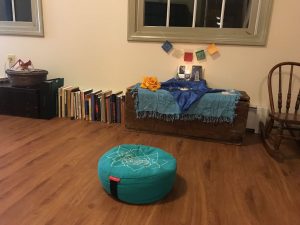 I decided to video this personal wave. I danced so vigorously that the camera kept migrating, and once fell onto the floor. I have not often recorded myself dancing, and I found it fascinating. To my surprise, I loved watching myself move. From this perspective, I seemed committed and creative. In the wave I danced before making the difficult decision to leave NYC, Staccato seemed blurry, hesitant. In this wave, it was ferocious. I couldn’t believe how much energy and force was released in Chaos. In Lyrical, I bounded, using every level, flinging up from the ground nearly to the ceiling, flexing my back, extending my arms. And I remember how it felt inside myself as I watched the Stillness section. I was spinning disks at all of my chakras, each a color of the spectrum, and then the room was crowded with spirits, helpers, and guides.
I decided to video this personal wave. I danced so vigorously that the camera kept migrating, and once fell onto the floor. I have not often recorded myself dancing, and I found it fascinating. To my surprise, I loved watching myself move. From this perspective, I seemed committed and creative. In the wave I danced before making the difficult decision to leave NYC, Staccato seemed blurry, hesitant. In this wave, it was ferocious. I couldn’t believe how much energy and force was released in Chaos. In Lyrical, I bounded, using every level, flinging up from the ground nearly to the ceiling, flexing my back, extending my arms. And I remember how it felt inside myself as I watched the Stillness section. I was spinning disks at all of my chakras, each a color of the spectrum, and then the room was crowded with spirits, helpers, and guides.
I ended with a prayer for health and safety for those I love and for all beings.
March 22, 2020, Broad Brook, Connecticut
(Photo 1: from grizly.com, Photo 2: by Meghan LeBorious)
by meghanleborious | Mar 22, 2020 | Notes on Practice
Pandemic. Coronavirus. Social Distance. Self-isolate.
In this time of worldwide fear and pain, practice is more important than ever. But what we usually do to practice the 5Rhythms is not safe at this time. So we are called on to be flexible, creative, and to test our ingenuity.
I admit that I miss dancing in big groups. I miss patient, belly-to-belly hugs on greeting. I miss the collective shifts of the crowd, like when a spontaneous chaos circle breaks out. I miss darting around into the empty spaces; I miss falling unexpectedly into partnership in perfect alignment; and I really, really miss dancing with my friends.
All of that said, I don’t think that practicing individually should only be considered as an austerity measure. In my experience, individual practice can also be a powerful teacher.
***
The first time I formally engaged in individual 5Rhythms practice was during a winter retreat at a Tibetan meditation center. I was seven months pregnant with my son, Simon, at the time. It was an eight-day retreat; and several powerful energetic teachings that are usually taught separately were taught consecutively.
It totally overloaded my circuits; and I took to the miles of rocky trails to process and integrate so much new energetic information at once. Flat wooden platforms used for tent camping during the warm seasons were interspersed throughout the woods; and I started using them as dance floors instead, throwing down my heavy coat as heat rose in my body and letting loose.
In Flowing one day, I danced on one of the platforms with one hand on a tall stick. I moved around it like it was an axis, dipping and spinning low, switching hands, curving my head, and threading my hips and spine around it.
Though I didn’t plan on it, before long, I decided to make practice formal, and I moved through all five rhythms in the woods at least once a day, often returning to the center windblown and red-cheeked, feeling like I had a glowing secret. One day, late afternoon sun blazed through the trees and through my body, dazzling in its intensity. On another day, I imagined that a pair of small dragons raced out of the woods to dance with me, both with a playful ardency, and with sinewy, powerful movements.
***
Like many, I’ve been practicing on my own a lot lately, as coronavirus locks down cities and countries. At this time, I’m very thankful for practice. It’s helped me to emotionally regulate, to integrate experiences, and to be connected to my communities.
There’s nothing like practicing in a room full of 5Rhythms dancers, where there are endless opportunities to explore relationship, and to see yourself as you are reflected in the people around you.
However, as rich as group practice is, there is also territory that can only be explored in individual practice.
Individual practice is also totally portable, free, and empowers you by allowing direct access to what we might call source–direct access to the depths of human experience–without the need for a teacher to act as a facilitator.
Gabrielle Roth, the creator of the 5Rhythms practice, conceived of the 5Rhythms as a way to relate to the creative process. She believed that rather than discovering or inventing something, she was creating a map for what was already inherent in human experience.
Working with a certified 5Rhythms teacher makes it easier to access deeper layers of reality, when we participate with full awareness in the dynamic, changing display of phenomena, but we actually have all the tools we need to connect with that same source even on our own, especially after we have already spent some time practicing in community.
Once, at my parents’ house when Simon was still an infant, nearly ten years ago, I was dancing a 5Rhythms wave with him in the living room. Within moments, I was filled with emotion. Though I had spent countless hours in the same room, dancing the rhythms there brought me to a layer underneath the mundane. It was like I was watching videos of infinite family moments inside the same room, where my own mother had been a child, and where I had been a child. I could sense and see my place in it, and see my son’s place in it, part of an unbroken line of human beings, the expression of countless acts of love and courage, and, too, of regret, grief, and unexpressed potential.
***
Creating some kind of an opening and closing ritual can support our practice, and provide cues to the unconscious that it is time to switch out of mundane gear. It can also be helpful to create some kind of visual or altar. One long-time dancer says, “My practice includes setting up at alter, which is usually a recent drawing. In the start of a practice, I think about all the giving beings I’ve ever danced with. I think about all the beautiful places I’ve danced. I try to do this at the start and end of every practice.”
Another dancer expressed that she finds it helpful to set an intention at the beginning of practice, and to return to that intention frequently, then to end with it.
***
During the summer of 2015, Simon and I traveled to Costa Rica. There, he went to camp during the days and I spent the time writing and dancing with the sea.
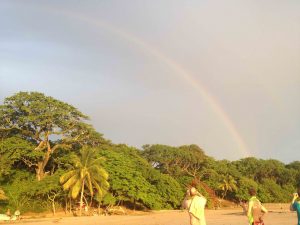
At first it was kind of boring.
I tried to seek out or set up informal dances with others, but it didn’t work out.
So there was no music blazing from high tech speakers, no interpersonal intrigue, no one to partner with and vibe off of, no one to take care of, no one to take care of me, and no external prompts from a teacher to pull me along.
That is to say, it was all up to me.
For the first few days, my dances were uninspired. I remained committed, though, and continued to spend the days dancing and writing. I began to go to a beach called Playa Pelada every day. It was remote enough that few people walked all the way there, but not so remote that getting there was impossible.
I sent some writing to one of the leaders of 5Rhythms, with the disclaimer,
“I know it’s not 5Rhythms practice if it isn’t led by a 5Rhythms teacher, but…”
She wrote back, “Actually, it can still be practice. It’s just that it’s individual practice.”
This validation helped me to believe in what was already unfolding, and I committed myself even more resolutely to practice–at minimum, to move through each of the 5Rhythms in sequence daily.
That brings up another benefit to individual practice–that it allows us to practice daily, even when schedule, geographic location, or, a worldwide health emergency make it impossible to get to a 5Rhythms class.
During low tide at Playa Pelada, warm tidal pools formed and I explored every crevice of the land, often moving in Flowing for long periods, and moving back into Flowing again and again, even as the other rhythms presented.
The first time that I danced the transition from low tide to high tide, I was cured of the problem of boredom.
Playa Pelada gave me so much to work with. There was a small island directly in front of the beach, and at high tide, the wild sea would rush around it on both sides, then meet in the center in a crashing tangle of waves. Shifting sand, rocks and debris would crash at my ankles and radically shift the very ground under me. I never tired of responding, arching, casting, turning over, flapping up fast, letting my hips recede as the waves pulled me, and coasting in circle after circle after circle.
Sopilote vultures arced and soared above the high cliff walls. Clouds shifted and raced. Rainbows appeared and dissolved. Iguanas, hermit crabs, and alligator-like caymen flashed in glimpses. Huge driftwood trees disappeared overnight. The sea rushed in and receded. And I witnessed this rich display and moved with all of it, leaving nothing out.
During our last week in Costa Rica, I danced from one low tide until the next–nearly twelve hours of moving–beginning before dawn. As the sun rose over the island and lit the sky, I immersed myself in a spontaneous ritual, using salt dyed with rainbow colors to create a giant spiral on the sand. I danced from its edge, where I felt I was in the relative, everyday world, along the path to its center, where I imagined I was in absolute reality, a place where different dimensions intersect. I moved back and forth through this spiral throughout the early morning hours as the ocean began to gather into a crescendo and eventually erased the spiral, gathering it back into herself.
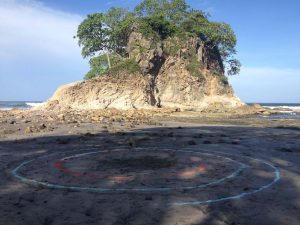
Practicing individually in beautiful, powerful places has expanded the possibilities in my own dance. I carry these experiences in my body, even when I enter back into dancing indoors in community. For example, dancing with a powerful river, I visited its deep, cold, dense, black river bed. Now, in Stillness, I can still connect with this experience and remind myself of my own depths, the dark, cool currents that run deep inside me.
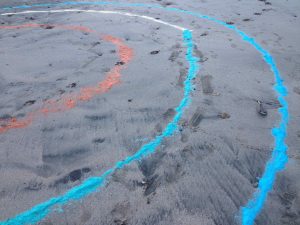
The year after Simon and I were in Costa Rica, we spent summer on the southeastern coast of Ireland. There again, Simon attended camp and I spent the days dancing with the sea, writing and making artwork.
The sea was indescribable. Gigantic. The tide goes out nearly a mile, then rushes back in at high tide to pummel everything in sight. 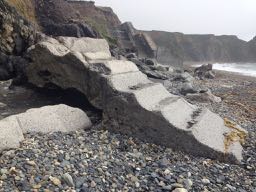 Slowly, as I danced with integrity over many sessions, this powerful place revealed itself to me, initiating me to its secrets.
Slowly, as I danced with integrity over many sessions, this powerful place revealed itself to me, initiating me to its secrets.
In general, I have often felt that I needed to keep myself in Flowing longer than felt intuitive. This was so I could be responsible and find the ground beneath me before taking on any other investigation, especially when dancing with other people.
In Ireland, I learned that another benefit of practicing independently is that I can work with the mercurial shifts of energy as they arise. Instead of holding myself in Flowing at the beginning, I noticed that even once I did move into Staccato, I moved back into Flowing many times. It wasn’t an all-or-nothing thing. Even in Chaos, I still found myself going back to Flowing.
Here, the stakes were different. Attending to the many small subtle shifts of energy as I fluctuated between different rhythms allowed me to follow intuition in a new way, and to observe nuances that weren’t always apparent during a wild collective dance. One day a wave followed this pattern: Flowing, Staccato, Flowing, Staccato/Chaos, Staccato, Flowing, Flowing Chaos, Chaos, Flowing, Lyrical, Chaos, Lyrical, Chaos, Flowing, Flowing Lyrical, Stillness.
***
This week, as coronavirus rolls in crushing waves over the world, like many, I’ve been practicing independently in my own home. I would prefer for Simon and I to be fully quarantined, both to keep us safe and to not proliferate germs, but we have roommates who are still going in and out, so my obsessive cleaning and containment procedures might be for naught.
Yesterday, I danced a five-song wave, one song for each rhythm. It all seemed very mundane at first, with afternoon sun coming in the window and falling in angled squares on my worn living room rug and the cat sitting next to me on a rumpled couch blanket. But soon, it tore itself from my throat and broke open. I spun and angled and dipped in Flowing, letting in fear. In Staccato, I was fierce, expressive, decisive. In Chaos, I was gigantic, kinetic, powerful. In Lyrical, I expanded beyond my small conception of who I am. In Stillness, I offered the merit of my practice to my family and my friends all over the world, and the afternoon living room seemed crowded with spirit guides, ancestors, and deities.
This territory is totally uncharted and the stakes are high.
For 5Rhythms practitioners and to everyone who has a committed practice, now is the time to lean into it.
Early in New York’s wave, I noticed I was trying to bear down hard until the crisis passed. But soon realized that coronavirus might last for an extended period, and that bearing down and wishing time away will only cause me to wish away moments of this precious life, and to close ourselves down emotionally and energetically. Somehow I have to come to terms with it. Better to open to what is, even when it is uncertain, even when we are met with grave hardship, and even when we are forced to stand face-to-face with our deepest, most terrifying fears.
 I really didn’t feel like practicing. It had already been a long day; and I had another big day coming. I was on a meditation retreat at Garrison Institute, and part of my personal practice was to dance a 5Rhythms wave, o sea, in other words, to move through each of the five rhythms in sequence. At least once a day, I tucked my socks into my pants, sprayed myself with deet, and made my way down a wooded path to the Hudson River. Because it’s my practice, even though I didn’t feel like it, I still stepped in.
I really didn’t feel like practicing. It had already been a long day; and I had another big day coming. I was on a meditation retreat at Garrison Institute, and part of my personal practice was to dance a 5Rhythms wave, o sea, in other words, to move through each of the five rhythms in sequence. At least once a day, I tucked my socks into my pants, sprayed myself with deet, and made my way down a wooded path to the Hudson River. Because it’s my practice, even though I didn’t feel like it, I still stepped in.  For the last two nights, I’ve slept on my back. This despite being a side-sleeper for pretty much my whole life. I have a certain way of tucking the pillow into the side of my neck, settling in, and nestling my back up to a pillow or another body. But my shoulders suffer, and the asymmetry sets me up for all kinds of misalignments. I’ve tried re-training myself many times, but I let myself go back to what’s comfortable when sleep has eluded me. This time, I think I’m on track to finally interrupt this persistent habit.
For the last two nights, I’ve slept on my back. This despite being a side-sleeper for pretty much my whole life. I have a certain way of tucking the pillow into the side of my neck, settling in, and nestling my back up to a pillow or another body. But my shoulders suffer, and the asymmetry sets me up for all kinds of misalignments. I’ve tried re-training myself many times, but I let myself go back to what’s comfortable when sleep has eluded me. This time, I think I’m on track to finally interrupt this persistent habit. In Staccato, I found edges and definition, sinking low in a howling yoga-goddess-pose again and again. In Chaos, spin was my thread, and I followed coiling, moving like a matrix, and flapping my head wildly as the expression of the spine in perpetual motion. In Lyrical I noticed that different dancers were highlighted on the zoom screen, and I moved in partnership with that specific dancer, assuming they, too, were seeing me. In Stillness I moved into vast space, noting the movements of clouds, the many birds I could see from the window, and wondering about arcane languages.
In Staccato, I found edges and definition, sinking low in a howling yoga-goddess-pose again and again. In Chaos, spin was my thread, and I followed coiling, moving like a matrix, and flapping my head wildly as the expression of the spine in perpetual motion. In Lyrical I noticed that different dancers were highlighted on the zoom screen, and I moved in partnership with that specific dancer, assuming they, too, were seeing me. In Stillness I moved into vast space, noting the movements of clouds, the many birds I could see from the window, and wondering about arcane languages. Things I wrote even two or three days ago seem so dated now. The pandemic is intensifying in this region.
Things I wrote even two or three days ago seem so dated now. The pandemic is intensifying in this region.
 I know we are blessed and privileged to have somewhere we can withdraw while the virus seizes every corner of the world. Even here, in a small apartment in Northern Connecticut, I am afraid. For myself, for my son, for my near-elderly parents, for my family, for my friends, for the world. And feeling the weight of worldwide grief.
I know we are blessed and privileged to have somewhere we can withdraw while the virus seizes every corner of the world. Even here, in a small apartment in Northern Connecticut, I am afraid. For myself, for my son, for my near-elderly parents, for my family, for my friends, for the world. And feeling the weight of worldwide grief. I decided to video this personal wave. I danced so vigorously that the camera kept migrating, and once fell onto the floor. I have not often recorded myself dancing, and I found it fascinating. To my surprise, I loved watching myself move. From this perspective, I seemed committed and creative. In the wave I danced before making the difficult decision to leave NYC, Staccato seemed blurry, hesitant. In this wave, it was ferocious. I couldn’t believe how much energy and force was released in Chaos. In Lyrical, I bounded, using every level, flinging up from the ground nearly to the ceiling, flexing my back, extending my arms. And I remember how it felt inside myself as I watched the Stillness section. I was spinning disks at all of my chakras, each a color of the spectrum, and then the room was crowded with spirits, helpers, and guides.
I decided to video this personal wave. I danced so vigorously that the camera kept migrating, and once fell onto the floor. I have not often recorded myself dancing, and I found it fascinating. To my surprise, I loved watching myself move. From this perspective, I seemed committed and creative. In the wave I danced before making the difficult decision to leave NYC, Staccato seemed blurry, hesitant. In this wave, it was ferocious. I couldn’t believe how much energy and force was released in Chaos. In Lyrical, I bounded, using every level, flinging up from the ground nearly to the ceiling, flexing my back, extending my arms. And I remember how it felt inside myself as I watched the Stillness section. I was spinning disks at all of my chakras, each a color of the spectrum, and then the room was crowded with spirits, helpers, and guides.


